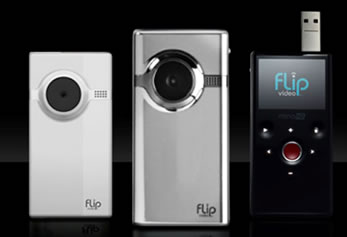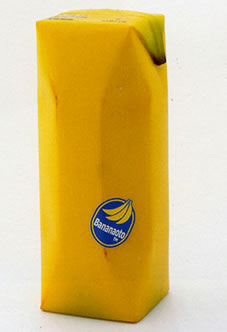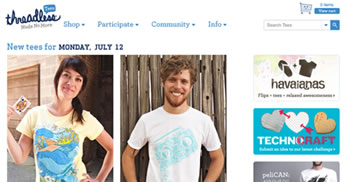Bake Your Brand into the Product
將您的品牌靈魂烙印到產品上
分享者/劉芝安
原文網址:http://wheresthesausage.typepad.com/my_weblog/2010/08/bake-your-brand-into-the-product.html
由John Winsor and Alex Bogusky 所撰寫的" Baked In”是本「標題巧妙、概念清晰明確」的好書。這本書為我過去四年在部落格的所作所為注入生命:所有的一切,重點就是產品的「牛肉」。如果產品夠出色,無須刻意,產品便會幫自己打廣告。Robert Stephen曾說過:廣告是針對無法吸引消費者注意的產品課稅。 我覺得諷刺的是,這本書是兩個來自廣告公司、從未賣過實物的男人完成的著作。根據他們書中的概念,將您的品牌靈魂烙印到產品或服務中,並不需要廣告的幫助!
內文最後提到了貫穿全書的中心思想,那就是未來公司必須以系統設計的角度來營運,而非只重視單一產品或服務面向。我完全同意這個觀點!這就叫做商業模式。濃縮咖啡膠囊就是一個很完美的例子。他不只是一項產品,同時也是一個傳遞系統與線上零售商,以及會員俱樂部。但我並不同意作者將這個觀點解釋成「品牌無用」。我想這句話的真正意義是指不需要有巧思的logo或是廣告宣傳,消費者會因為產品本身的故事而了解這個品牌理念進而愛上該品牌。
1.犧牲與簡化:
在產品受到過於複雜的功能與外觀設計的今天,縮減多餘的部分,反而能讓真正被需要的功能發揮更大的效用。Flip video camera就是一個很好的例子。我早已放棄我那台附上一本和「戰爭與和平」一樣長說明書的笨重video camera。
Flip是只有一個按鈕的攝影機,內建USB接頭,直接可以連上電腦傳輸影片檔案。更聰明的是,每當你在製作或傳輸影片時,他會讓您選擇是否將Flip Logo顯示在影片畫面中,相當於內建免費廣告。這項產品在2007年推出後,銷售量已達到150萬台。而這間熱門公司也被Cisco以5億9千萬元收購。
2. 不是要第一而是要唯一:
作者督促我們追求「最好」而不安於「較好」換句話說,不要只想當比較好的、比較快的、比較小的,而是最好的、最快的、最小的,盡力尋求成為某個領域的領導者(首選)!像MacBook Air就使以最輕薄的筆電聞名世界。不是要第一而是要唯一。
3.把產品的內藏優點顯現出來:
就是讓產品的獨特性輕而易舉的展現出來。書中舉了幾個例子說明:為了讓吉他更堅固,利用電磁原理來取代吉他音箱的共鳴。另一個案例是由Naoto Fukasawa設計的古怪(滑稽)香蕉果汁包裝,沒有任何logo與產品標示。
4.萬能的共同創作者:
書中所舉的例子是類固醇。Threadless是一間網路成衣,沒有特定設計師,從服裝設計、產品決策、甚至到服裝宣傳圖片、通通讓會員自己上傳設計,然後票選出前十名實際印成T-Shirt上市!被選中的設計師,可獲得2500元現金,既可以讓大家穿著你的設計又有錢可賺,不壞嘛!
結論就是,如果你無法決定該不該為品牌量身訂做一個廣告宣傳,也許該仔細檢視一下,您的品牌靈魂是否已經烙印在產品中了呢?還是說,您的產品只是隨波逐流的把所有希望放在一則巧妙的廣告來讓不夠有特色的產品或服務苟延殘喘?

Thanks to Jez from Live Union for telling me about the book "Baked In", by John Winsor and Alex Bogusky. Its a nice little book with a brilliant title and central concept. "Baked in" brings to life what I've been going on about for the last four years here: all about the product "sausage". And if that product is brilliant it advertises itself. To quote Robert Stephen of the Geek Squad: "Advertising is a tax for having an un-remarkable product".
What I find funny is that the book is written not by someone who sells real stuff, but rather by 2 blokes from an ad agency. Follow their idea of baking the brand into your product or service and, as they say, you don't need advertising.
The most fundamental idea in the book comes at the end, when they talk about the future of business being about "systems" rather than simple products or services. Agree 100%. We've called this "business models". Nespresso is a great example. It’s a great product. But also a delivery system. And an online retailer. And a members club. I don't agree with them when they say this means that we no longer need brands. I think what they really mean is we don't need clever logos and ad campaigns, as they love the idea of products or services being based on and telling a story. For story, read brand idea.
Here are some of my fave examples of baking the brand into your product or service:
1. "Sacrifice and simplify":
right on boys. In a world of over-engineered products with too many gizzmos and features there's money to be made by taking stuff out. And making what's work really well. Good example is the Flip video camera. I gave up on our video camera as it was a) too bulky and b) a pain in the ass to get the film onto my pc. It also had a user manual the length of War and Peace.
The Flip is a camera with one button: Record. And it has a USB thingy built in, so you just plug it into your PC. Genius. Clever trick is that when you make and send a movie it gives the option of adding the Flip logo, which is in-built free advertising. 1.5 million have been sold since it was launched in 2007. And the company was hot enough to be bought by Cisco for $590 million.

2. "The power of an absolute":
the Baked in Boys urge us to look for "-est" and not "-er". In other words, search for how you can be the leader at something. Not just bett-er or fast-er or small-er. But the biggest, fastest or smallest. For example, the MacBook Air was launched with the idea of "Thinnovation", and being the thinnest laptop in the world.
3. "Make what's invisible on the inside visible":
this tip is all about making the uniqueness of the product visible for all to see. They give an interesting example of Fender making the electric guitar solid, not hollow as all guitars were before, to reinforce the idea is what electric not acoustic. Another example is this wacky banana juice pack designed by Naoto Fukasawa, which sells itself without any logo or even product descriptor.
4. "The almighty co-creator":
I've posted a bit about co-creation. The example John and Alex use is co-creation on steroids though. Threadless is a web-based clothing business where members upload ideas for t-shirts. The community online votes, and the top 10 get made into real t-shirts for sale on the site. The chosen designers get $2500 in cash, which aint half bad, and the kudos of having people wearing your design.

